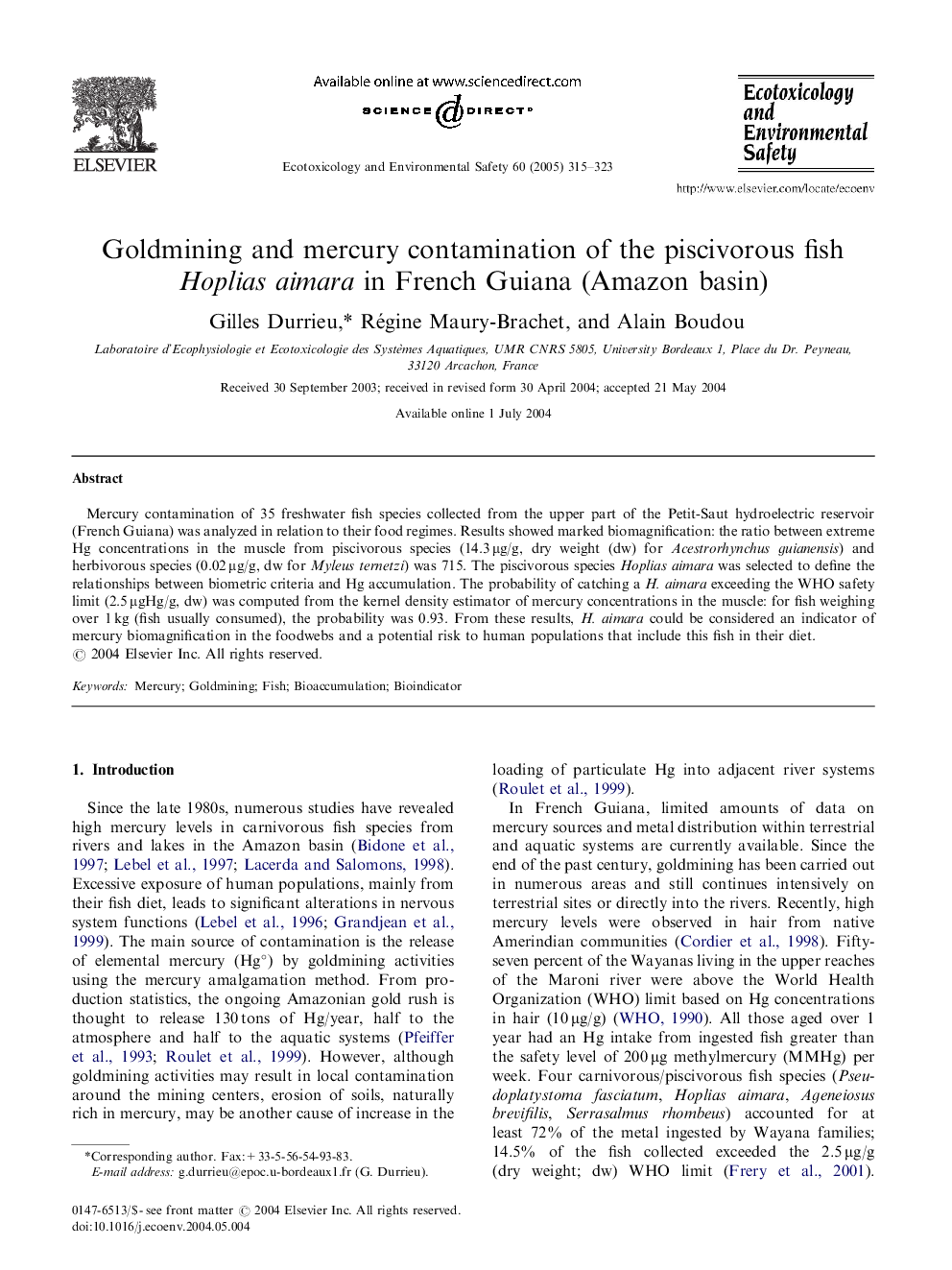| Article ID | Journal | Published Year | Pages | File Type |
|---|---|---|---|---|
| 9454761 | Ecotoxicology and Environmental Safety | 2005 | 9 Pages |
Abstract
Mercury contamination of 35 freshwater fish species collected from the upper part of the Petit-Saut hydroelectric reservoir (French Guiana) was analyzed in relation to their food regimes. Results showed marked biomagnification: the ratio between extreme Hg concentrations in the muscle from piscivorous species (14.3 μg/g, dry weight (dw) for Acestrorhynchus guianensis) and herbivorous species (0.02 μg/g, dw for Myleus ternetzi) was 715. The piscivorous species Hoplias aimara was selected to define the relationships between biometric criteria and Hg accumulation. The probability of catching a H. aimara exceeding the WHO safety limit (2.5 μgHg/g, dw) was computed from the kernel density estimator of mercury concentrations in the muscle: for fish weighing over 1 kg (fish usually consumed), the probability was 0.93. From these results, H. aimara could be considered an indicator of mercury biomagnification in the foodwebs and a potential risk to human populations that include this fish in their diet.
Related Topics
Life Sciences
Environmental Science
Environmental Chemistry
Authors
Gilles Durrieu, Régine Maury-Brachet, Alain Boudou,
